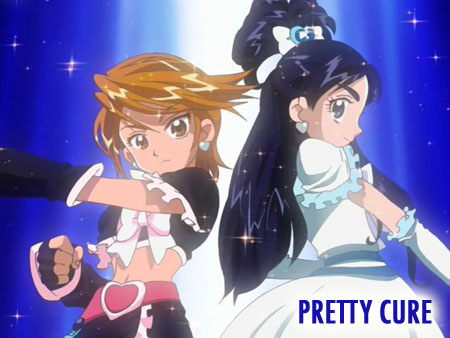Ask John: What’s John’s Opinion about Pretty Cure Airing on YTV?

Question:
I know you’ve been a fan of the series for a while (at least the first few years), so what do you think of it finally airing in North America? Do you think we’ll ever see bilingual DVDs or a decent release?
Answer:
I have been one of America’s most outspoken fans of the first two Pretty Cure series. Toei Animation took the third series is a direction opposed to the first two series, which largely alienated me from the third series. The fourth series didn’t immediately capture my interest the way the first series did, so I didn’t watch the fourth series either. The current fifth series seems to recall some of the characteristics that made the first two Precure shows so unique and interesting. As a result, I’ve watched more than half of the current season, but lately I’ve been failing to keep up to date with it. As both a Pretty Cure fan and someone that supports the international distribution of anime, I’m very pleased to see this deserving franchise finally get its overdue North American release. However, I can’t avoid feeling that the North American release is too little, too late.
The Canadian television broadcast hasn’t begun yet, so viewers can’t make judgements about it. However, early information about the YTV broadcast suggests that the series may be extensively localized for mainstream consumption. Heavy revisions were imposed upon the North American broadcast versions of Tokyo Mew Mew and Ojamajo Doremi. Neither of those titles has received a respectable North American home video release.
The “purist” part of me is glad that Toei Animation has released episodes of the first Pretty Cure series online in America uncut and subtitled. However, this release strategy also reeks of Toei merely dumping the show into the American market with as little support and investment as possible. Although uncut, subtitled episodes are available for digital purchase, no archival DVD release plans have been announced for North America.
The first two seasons of Pretty Cure are especially noteworthy for bringing a new perspective to the traditional magical girl anime format. Although the first two seasons of Pretty Cure do include cute, talking mascots, magical transformations, hints of romance, and obligatory weekly battles, the series also introduced magical girls that rely heavily upon their own physical prowess rather than magical attacks, character and relationship development strong enough to carry episodes even without the obligatory action scenes, a pronounced tendency to avoid the routine “power-ups” of shoujo and shonen anime – resulting in the girls occasionally actually losing their fights and the series sustaining a greater sense of uncertainty and dramatic tension, and a sense of actual danger and the possibility that the girls’ battles do actually involve life and death struggles.
Pretty Cure is a landmark entry in the history of shoujo anime, which explains why the series has become Japan’s most popular and successful shoujo anime franchise in years. In the early 1990s, Sailor Moon, despite being heavily “Americanized,” inducted a new generation of American anime fans. Pretty Cure has the same potential, which is something that Card Captor Sakura, Tokyo Mew Mew and Ojamajo Doremi did not have. Only the future will inform us if the upcoming YTV broadcast will be successful and inspire a generation of North American children to explore more Japanese animation. Regardless of the success of failure of the YTV broadcast, I’m gratified to know that Pretty Cure is, at last, getting some significant exposure in North America. But a show of this caliber and potential really deserves a more significant North American distribution effort than it’s received so far, and is likely to ever get.

